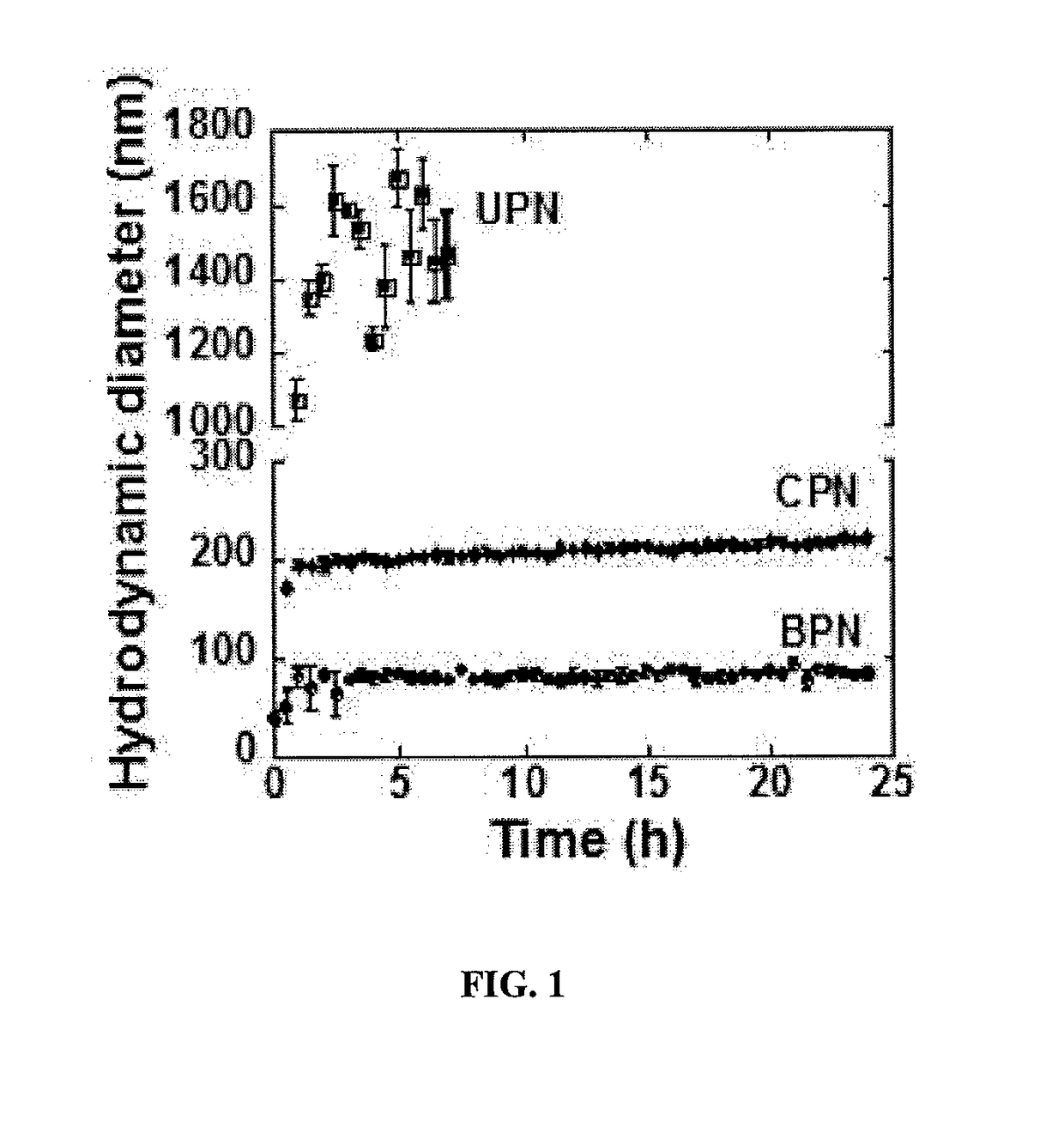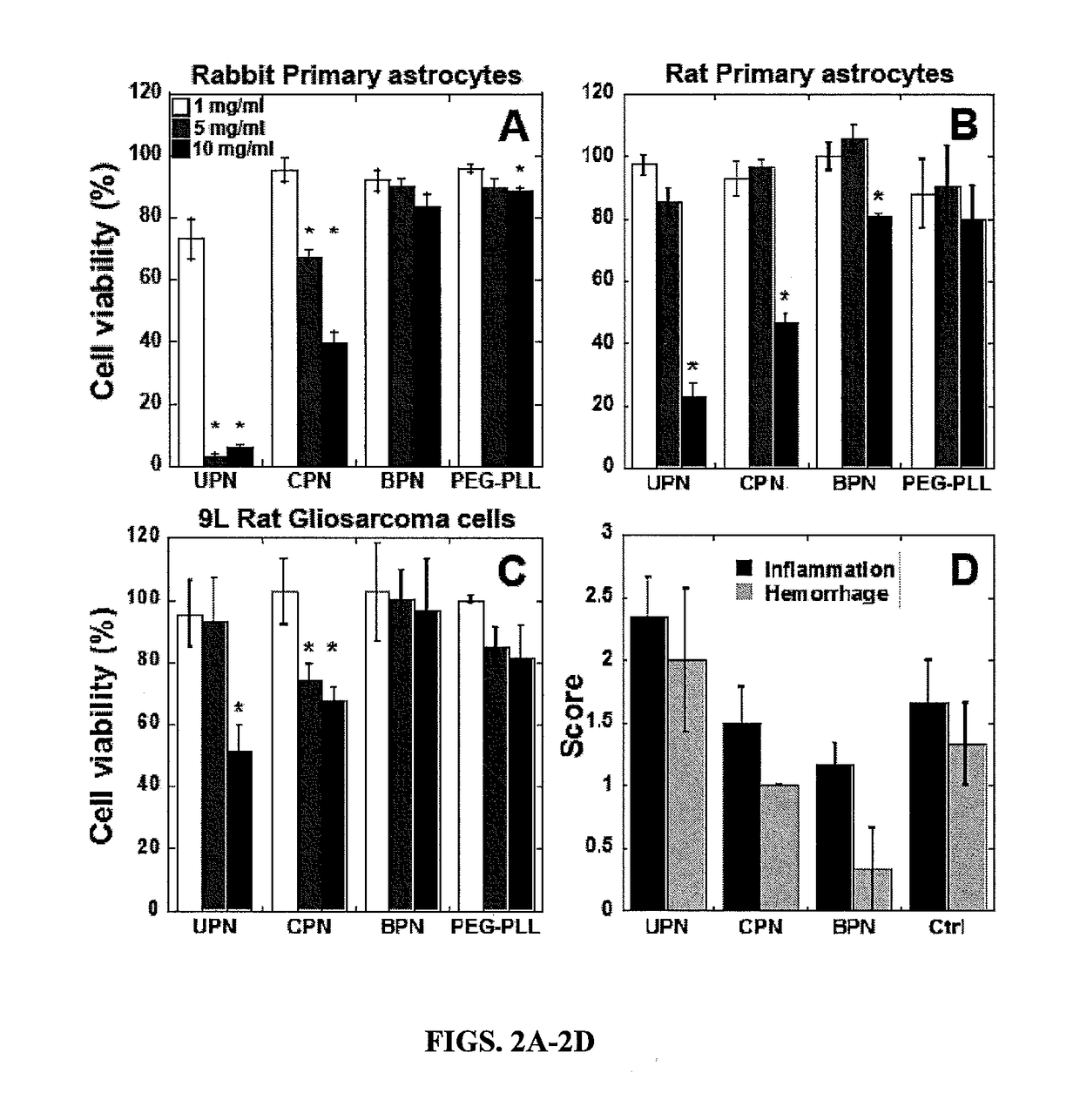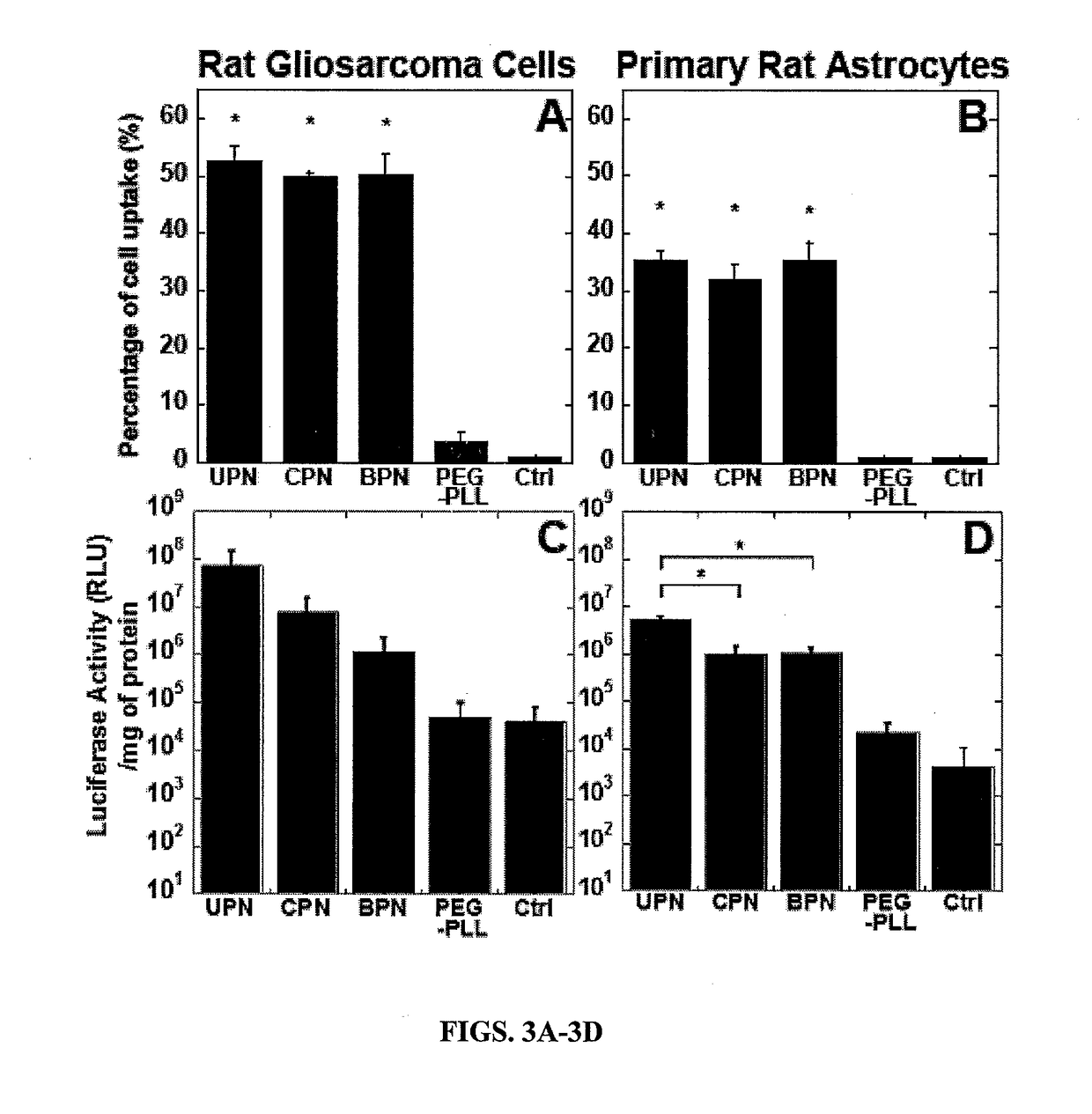Engineering synthethic brain penetrating gene vectors
- Summary
- Abstract
- Description
- Claims
- Application Information
AI Technical Summary
Benefits of technology
Problems solved by technology
Method used
Image
Examples
example 1
on of Vectors to Shield the Positive Surface Charge Intrinsic to Cationic Polymer-Based Gene Vectors
[0181]Materials and Methods
Polymer Preparation
[0182]Methoxy PEG N-hydroxysuccinimide (mPEG-NHS, 5 kDa, Sigma-Aldrich, St. Louis, Mo.) was conjugated to 25 kDa branched polyethyleneimine (PEI) (Sigma-Aldrich, St. Louis, Mo.) to yield a PEG5k-PEI copolymer as previously described [30]. Briefly, PEI was dissolved in ultrapure distilled water, the pH was adjusted to 7.5-8.0 and mPEG-NHS was added to the PEI solution at various molar ratios and allowed to react overnight in 4° C. The polymer solution was extensively dialyzed (20,000 MWCO, Spectrum Laboratories, Inc., Rancho Dominguez, Calif.) against ultrapure distilled water and lyophilized. Nuclear magnetic resonance (NMR) was used to confirm a PEG:PEI ratio of 8, 26, 37 and 50. 1H NMR (500 MHz, D20): δ 2.48-3.20 (br, CH2CH2NH), 3.62-3.72 (br, CH2CH2O). The poly-L-lysine 30-mer (PLL) and PEG5K-PLL block copolymers were synthesized and ch...
example 2
or Particles are Stable Following Incubation in Physiological Environment
[0190]Materials and Methods
[0191]PEI nanoparticle stability was assessed by incubating nanoparticles in artificial cerebrospinal fluid (aCSF; Harvard Apparatus, Holliston, Mass.) at 37° C. and conducting dynamic light scattering every 30 mins for 24 hours. After 1 hour of incubation, a fraction of the nanoparticle solution was removed and imaged using TEM.
[0192]Results
[0193]To predict the particle stability of gene vectors following in vivo administration, the in vitro stability in artificial cerebrospinal fluid (aCSF) was characterized over time at 37° C. (FIG. 1). UPN aggregated immediately after adding in aCSF. In 1 hour, the hydrodynamic diameter increased 8.3-fold and in 7 hours, the polydispersity was larger than 0.5, indicating loss of colloidal stability. CPN increased in diameter by 3-fold following incubation in aCSF and remained stable over 24 hours. BPN, formulated by the blend approach, exhibited i...
example 3
or Particles are Non-Toxic In Vitro and In Vivo
[0194]Materials and Methods
Cell Culture
[0195]9 L gliosarcoma cells were provided by Dr. Henry Brem. 9 L immortalized cells were cultured in Dulbecco's modified Eagle's medium (DMEM, Invitrogen Corp., Carlsbad, Calif.) supplemented with 1% penicillin / streptomycin (pen / strep, Invitrogen Corp., Carlsbad, Calif.) and 10% heat inactivated fetal bovine serum (FBS, Invitrogen Corp., Carlsbad, Calif.). When cells were 70-80% confluent, they were reseeded in 96-well plates to assess toxicity and in 24-well plates to assess transfection and cell uptake of gene vectors. Rabbit primary astrocytes were provided by Dr. Sujatha Kannan. Mixed cell culture was prepared from day 1 neonatal rabbits and astrocytes were isolated using the conventional shake off method. Astrocytes were cultured in DMEM supplemented with 1% pen / strep and 10% FBS and passaged once; when cells were 70-80% confluent they were reseeded in 96-well plates for cell viability assay. ...
PUM
| Property | Measurement | Unit |
|---|---|---|
| Density | aaaaa | aaaaa |
| Hydrophilicity | aaaaa | aaaaa |
| Biocompatibility | aaaaa | aaaaa |
Abstract
Description
Claims
Application Information
 Login to View More
Login to View More - R&D
- Intellectual Property
- Life Sciences
- Materials
- Tech Scout
- Unparalleled Data Quality
- Higher Quality Content
- 60% Fewer Hallucinations
Browse by: Latest US Patents, China's latest patents, Technical Efficacy Thesaurus, Application Domain, Technology Topic, Popular Technical Reports.
© 2025 PatSnap. All rights reserved.Legal|Privacy policy|Modern Slavery Act Transparency Statement|Sitemap|About US| Contact US: help@patsnap.com



